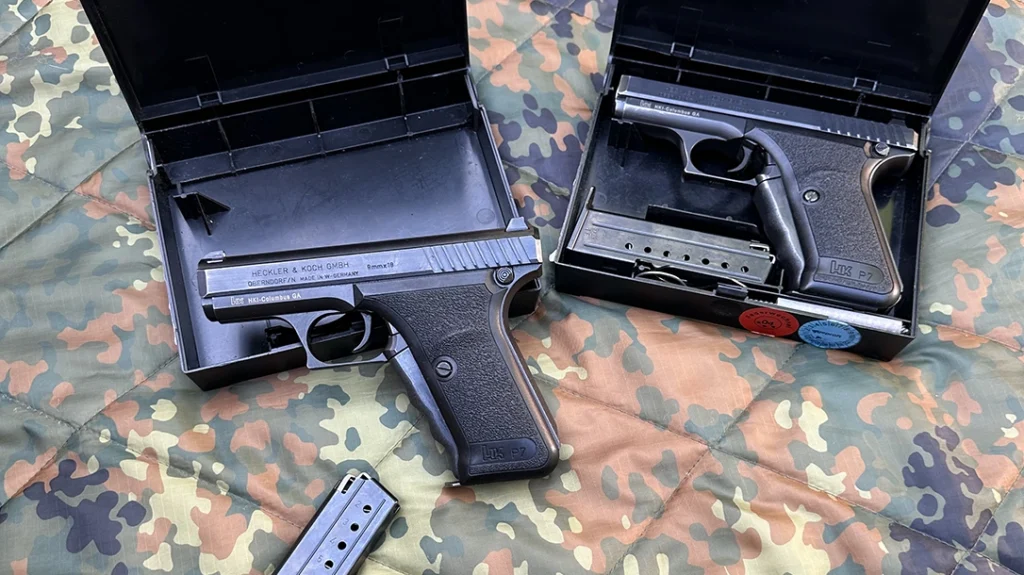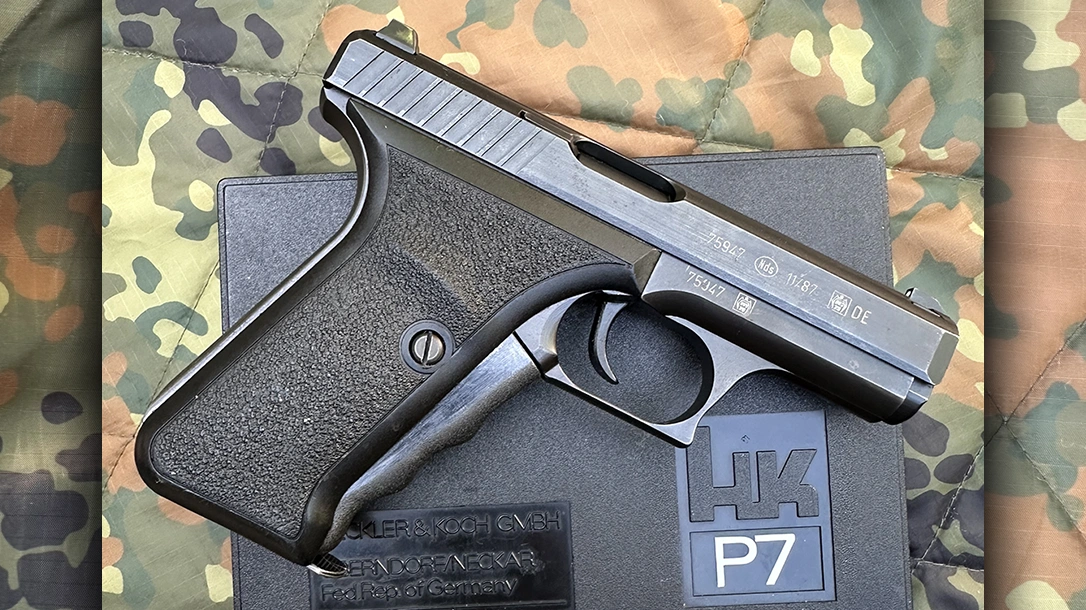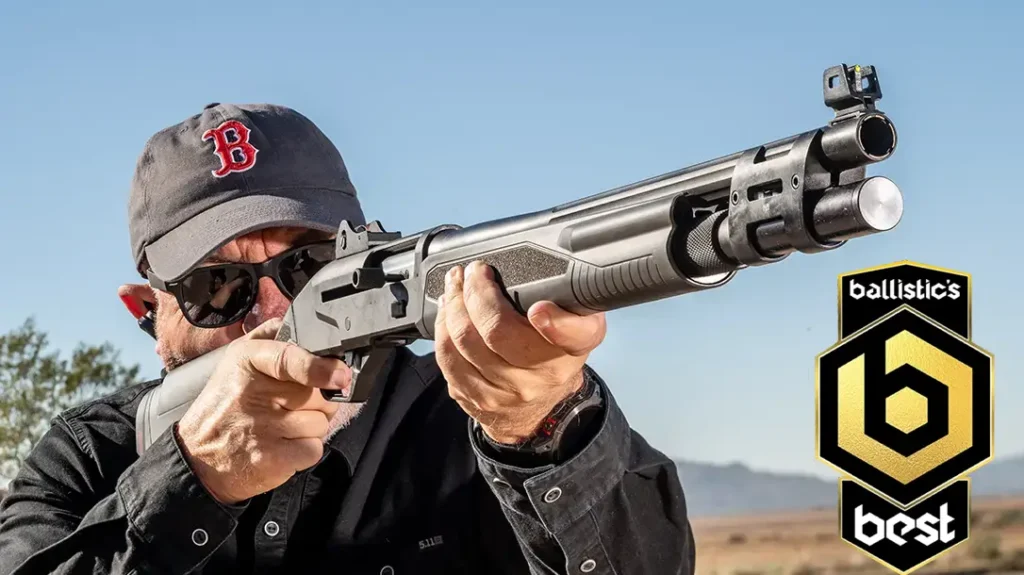Today, the striker-fired semi-auto handgun is a standard sidearm of police and armed civilian communities alike. Not to mention significant adoption by militaries as well. While several companies still produce well-received DA/SA handguns, most of the time, a police officer or a concealed carrier’s chosen pistol will lack a hammer. Exemplified by the Glock line of pistols, many will point to it as the first major example. However, as a famous little green guy once said, “…there is another.” Let’s discuss the history of the H&K P7 PSP.
Where Did the H&K P7 Police Self-loading Pistol Come From?
In 1972, the massacre at the Munich Summer Olympics brought the quality of arms in W. Germany under extreme scrutiny. After that awful summer, a request went out from the W. German police for modern designs to replace their aging handguns. They themselves were an improvement on a design that was over 40 years old at that point.
In response, a number of guns were submitted from everyone you’d expect: Astra, Walther, SIG, and, notably, Heckler & Koch.
The H&K design was the 7th such gun admitted to the trials. In the most German manner possible, it was dubbed the “Pistol 7.” H&K further called it the “Police Self-loading Pistol,” which is exactly as Teutonic as the test name. The company designed it from the ground up to be a modern weapon that was accurate, comfortable to shoot, and safe to carry in any condition.
Advertisement — Continue Reading Below
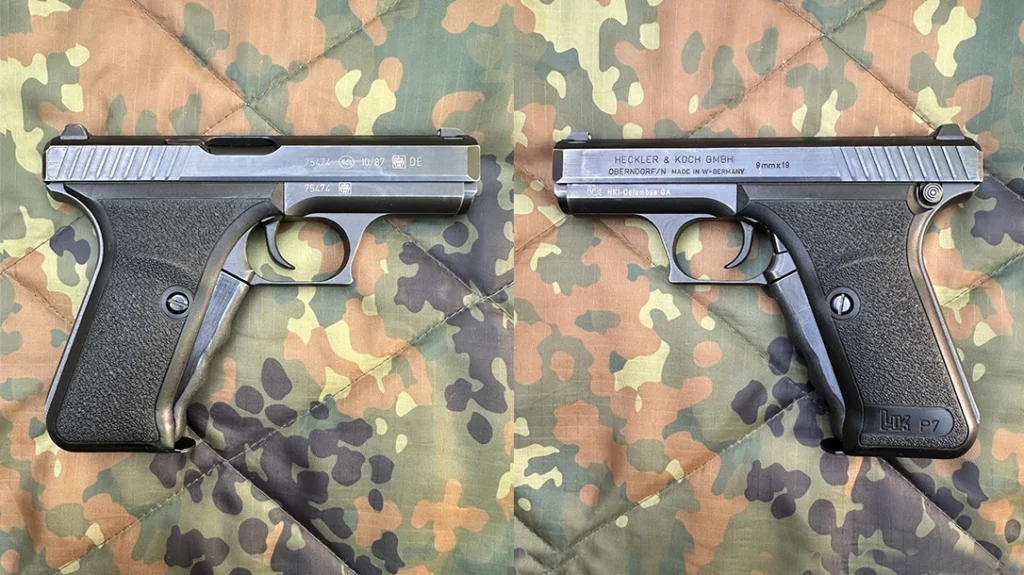
Testing was completed in 1978. The H&K P7 PSP chambered in 9mm, with 8rd, single stack magazines, was the clear winner. It was so impressive and unique that the German, American, and Austrian militaries went on to evaluate it in the early 1980s.
Eventually, it lost out to the Beretta M9 in the States and the Glock in Austria. However, it was produced in multiple versions in several calibers. This resulted in a family of firearms that have been employed and appreciated by police, military, and civilian shooters around the world.
Advertisement — Continue Reading Below
What made it so special?
While not the first striker-fired firearm, it was one of the first such handguns to gain global attention. Years before Glock took the LEO world by storm, the P7 was nearly unique in this regard. But it had much more going for it.
Most notably, it utilizes a gas-delayed blowback system and a cocking lever in the front strap of the grip. This has, somewhat unfortunately, become known as the “Squeeze-Cocker.”
The Gas System
Most semi-auto handguns use the “equal and opposite reaction” of the bullet’s forward travel to send the slide rearward. This relies on spring pressure delaying movement enough to ensure this functions properly without allowing significant gas and unburnt powder to escape through the ejection port.
Advertisement — Continue Reading Below
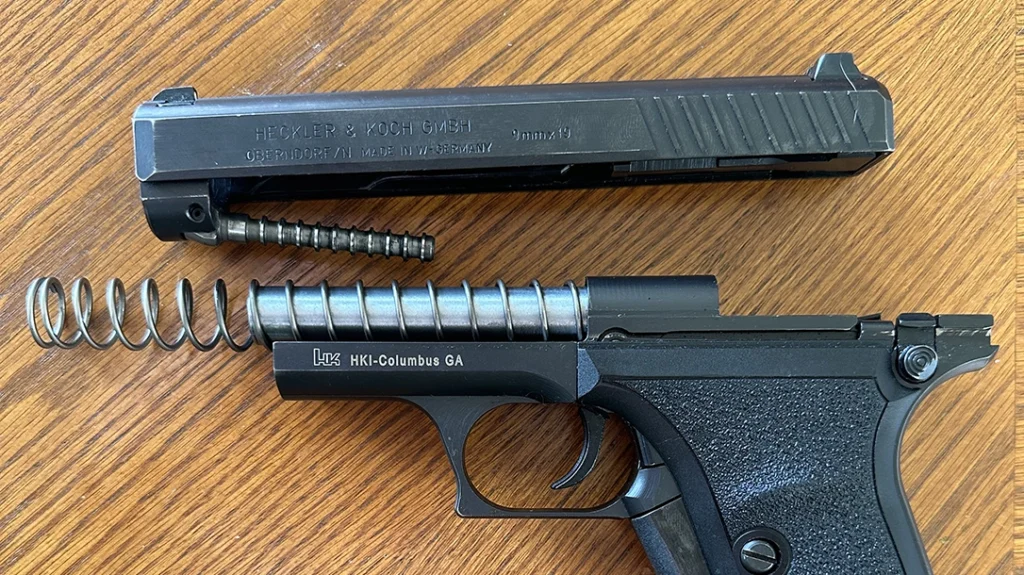
The P7 has a gas port leading into a tube under the barrel, which houses a piston attached to the slide assembly. So, until the bullet leaves the muzzle, gas is pressing forward on the piston, and the slide can’t move rearward. This produces safe operation, and a delay that helps spread out recoil.
The Squeeze-Cocker
Unsatisfied with one unique feature, the madlads at H&K also produced this gun with a completely unique combination safety+cocking lever.
Advertisement — Continue Reading Below
Sitting prominently on the front strap, and pivoting at the butt of the grip, the squeeze-cocker means that the gun can be carried in any condition safely. The user must fully and completely squeeze this lever to the rear to fire.
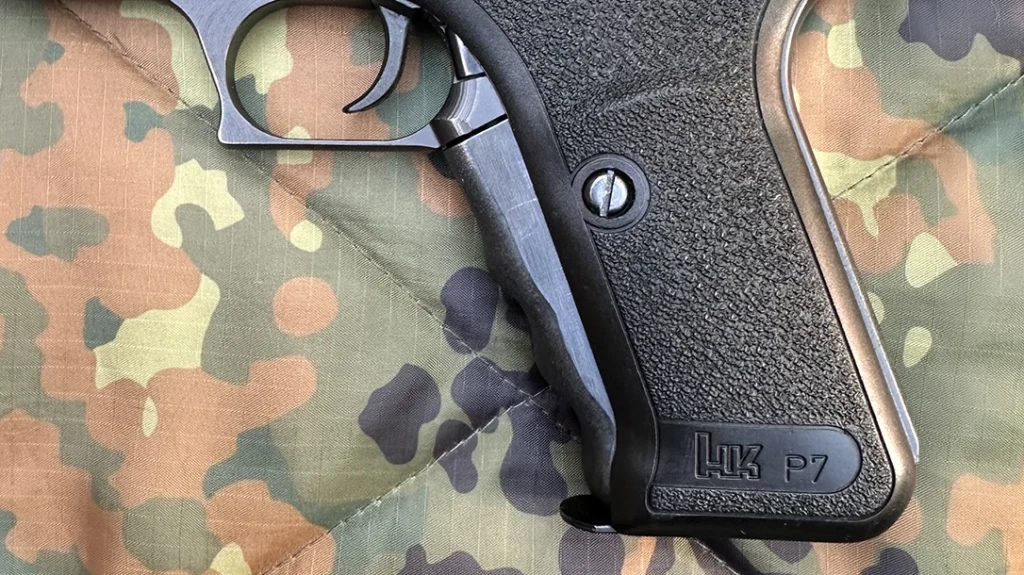
This puts the striker under spring pressure. Its firing condition is indicated by a tangible and audible click, as well as a cylindrical indicator that moves rearward through the backplate.
Advertisement — Continue Reading Below
The Rest
Additionally, this gun has a low bore axis, and a fixed barrel, allowed by a gas system that doesn’t require a rotating or tilting barrel. This increases accuracy and reduces felt recoil.
Putting all of the pressure of cocking the striker on the three non-trigger fingers means the trigger pull can be very light, competing with even the 1911 triggers. The pull consists of a very short take-up, some slight resistance, and then, suddenly, you’ve already fired. In this way, the trigger helps with accuracy by minimizing negative user input.
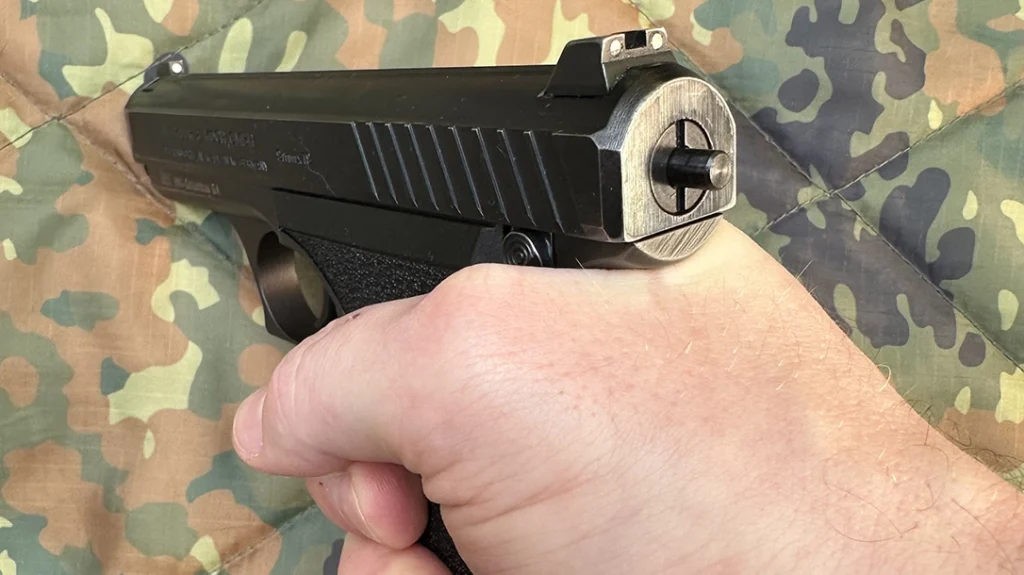
Advertisement — Continue Reading Below
Less well-received were the heel-mounted magazine release and the low capacity of the magazine itself. After military trials, the P7M8 model moved the mag release to the bottom of the trigger guard. Additionally, the P7M13 added a 13rd magazine, and both models had enlarged trigger guards. This was intended for use with gloves and improved heat shielding, as the OG PSP tended to heat up quickly.
H&K P7 PSP’s Legacy
So, it’s great, right? What happened? During production (1979-2008), the P7 series was produced in 9mm, .22LR, .32 and .380ACP, .40S&W, and even .45ACP (apparently for US military testing).
The P7 series found a home in a number of government agencies. These ranged from GSG-9, the famed German Special Operations unit, NJ and UT state police, the Bavarian Police, and even the U.S. Park Police.
Advertisement — Continue Reading Below
The primary end-user problem with carrying one, regardless of whether you were issued it or purchased it yourself, is the unusual manual of arms. There is no traditional safety (outside of the “S” model built for certain government agencies who required such a device). Likewise, there is no slide stop/release.
Finally, maintaining positive pressure on the squeeze-cocker added a significant learning curve to safely and effectively operate the pistol under pressure.
Perhaps the most prominent factor in limiting its commercial success was the cost. Initially, it was comparable to other new semiautos in the 1980s in the mid-$400 range. However, perhaps to boost the P7 program’s bottom line in the civilian market, H&K started escalating the price regularly. By its second full decade of life, the P7 series would regularly command up to $1,000.
Advertisement — Continue Reading Below
On top of the admittedly weird manual of arms, the cost was likely difficult for most agencies to justify. For this reason, the P7 series and its unique traits have since landed firmly in the category of collectors’ items.
